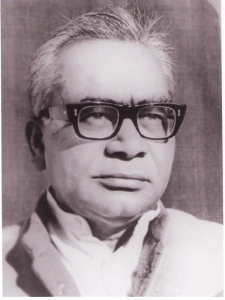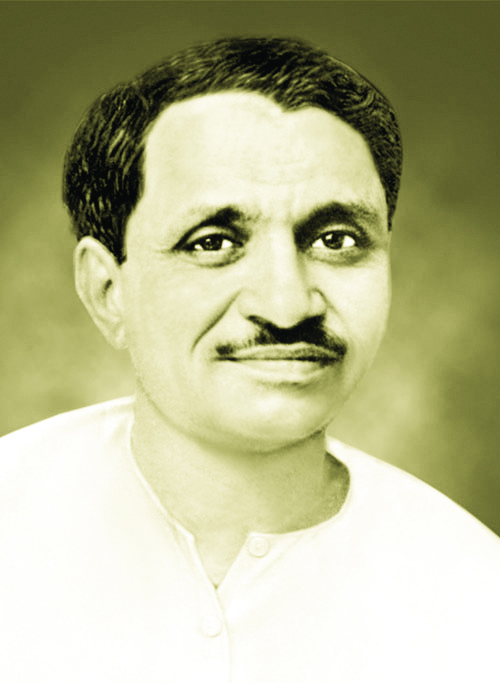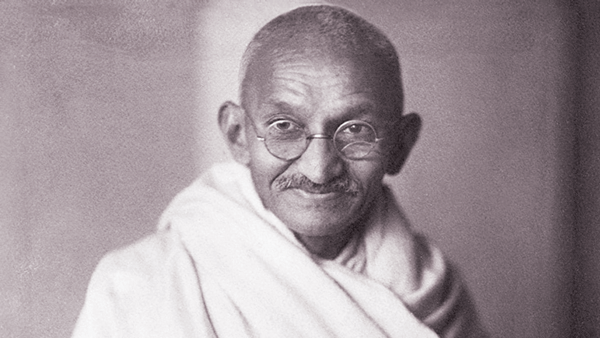VASANT NARGOLKAR
(Continue from Last Issue….)

He had said: “The Russian economy has closely followed the latest Capitalist technique of large-scale production and has
thus produced certain traits which bear a family likeness to capitalism.”
Lohia emphasized satyagraha as a weapon in the hands of oppressed peoples. But satyagraha had always to be nonviolent. Like many of his Socialist colleagues, Lohia had drawn closer to Gandhian Sarvodaya in some respects. “Non-violence,” he once declared, “has almost always been one of my load stars.”
Deendayal advised his countrymen not to get tied down either to “Marx or Marshall.” He was opposed to borrowing ideas of economic reconstruction or political philosophy from the Western or Communist countries. While pleading for both economic and political decentralization, he had expressed his views about capitalism and Socialism in the following manner :
“A capitalist economy first acquires power in the Economic field and then enters the political field, while Socialism concentrates power over all means of production in the hands of the state. Both these systems are against the democratic rights of individual.”
Swaraj is a Vedic Word
Gandhi did believe in the formal type of democracy which India borrowed from the West. But he also held that the law of majority did not apply in matters of conscience. Swaraj for Gandhi was a Sacred Vedic word and it meant self-rule and self-restraint. The highest type of democracy, according to Gandhi could only be evolved through non-violence. The ancient ideal of Ramrajya was one of true democracy in which the lowliest of citizens was assured of quick justice. The present state of unjustifiable inequalities with few rich people rolling in riches and the masses going hungry cannot be called a democracy. Gandhi also insisted on making the village the unit of democracy. True democracy could not be worked by a few people at the top. It had to be worked from below by the ordinary people belonging to villages. Thus, Gandhi was not satisfied with the Western type of democracy. He expected India to evolve the true pattern of democracy and bequeath it to the world
Democracy, in Lohia’s view, must, under all circumstances, be the sheet anchor of socialism. With a view to broadening the base of democracy, as desired by Gandhi, Lohia put forward his scheme of the “Four-Pillar State.” According to this scheme, political power of the state was to be suitably distributed under an amended constitution among the four pillars, namely, the village (or the town). the district, the state and the centre. One of his many suggestions to bring this about was that one-forth of the total revenues and plan money should be spent by the elected assemblies at the village and district level. The Four Pillar State is obviously a scheme for the decentralization of political power.
Deendayal on his part did not accept everything Western as “progressive,” as some so-called radicals and intellectuals soem to do. At the same time, ha was not an obscurantist clinging to outmoded Institutions and traditions of the past.
Cultural Tolerance Is India’s Forte

His concept of democracy was rooted in what he called Bharateeyata. The unique culture of Bharat teeches us to look upon illo as a whole, Western democracy divides people into political majority and minorities. Marxism or Socialism also divide society into warring classes. Under the Bharateeya scheme of things. nothing else, not even people, but Dharma is considered supreme. Dharma is that body of ethical and social principles which Sustains Society. Dharma tells overy individual what is pleasurable (Fra) and what is beneficial (श्रेयस्) श्रेयश्च प्रेयश्च मनुष्यमेतस्तौ सपरीत्य विविनक्ति धीरः श्रेयोहि धीरोऽभि प्रेयसो वृणीते, प्रेयो मन्दो योगक्षेमाद् वृणीते।। कठोपनिषद्, 1/2/2 for him. It is Dharma which decides the limits of enjoyment of pleaSurable objects (Kama), as also those of acquisition of wealth (Artha). Besides, Dharma shows the way to the fourth purushatrha, namely. liberation of the Soul (Moksha).
Deendayal, interpreting this integral view of man’s life and its objectives, subordinated every other value or principle to Dharma. He wanted Dharma-rajya instead of mere Janara/. The similarity between Gandhi’s Ram-rajya and Deendayal’s Dharma-rajya is too obvious to need any emphasis.
Dharma, according to Deendayal, is the repository of the nation’s Soul. If Dharma is destroyed the nation perishes. Every nation has a soul, which Deendayal names as Chiti (चिति). Chiti means the ideals of a nation. The strength and energy which activizes a nation, he calls Virat (वराट्)Bharat, in his opinion, is a nation which has charished and preserved some ideals which are unique to it. The uniqueness of Bharat can best be manifested through its Culture and not through its politics. Whatever this remark, Citi and Virat may mean, Deendayal was on Surer ground when he proclaimed :
“If we have anything that we can teach the world it is the feeling of cultural tolerance and a life dedicated to duty.”
Cultural tolerance is indeed i message that India is in a position to pass on to the world. The great peculiarity of the Indian culture has been the philosophical realization of the fundamental unity of all humanity, of all life, nay. von of the whole of universe. One who is conscious of this, will naturally give up the false notions of high caste änd low caste and would cease to be chauvinistic or communal In his outlook.
Brotherhood of Man, the Ideal
Gandhi, Lohia and the Hindu Sanghathanists, from their obviously different standpoints, opposed the partition of the Country before 1947. The Jan Sangh did not then exist. But Deendayal and others who believed in the concept of “Hindu Nation, always advocated Akhanda Bharat (Undivided India) as one of their objectives. In 1964, Lohia and Deendayal issued a joint statement pleading for a federation of India and Pakistan. The situation, however, has changed much after 1971, when Bangla Desh established its independence from Pakistan. If ever there is to be an Akhanda Bharat which seems to be a remote possibility at present, it will come into existence only through Mutual love, trust and agreement among the Indians, the Pakistanis and the citizens of Bangla Desh. Cultural tolerance is the key stone of a feeling of mutual affinity and Trust. Indians will have first to put into practice Gandhi’s concept of humble nationalism and not the arrogant and intolerant nationalism borrowed from the West Gandhi aimed much higher than a federation of the Sovereign states of the Indian Subcontinent. He aid :
“Indian culture is Indian. It is neither Hindu, Islamic or any other wholly. It is a fusion of all, and essentially Eastern… (But) my idea of nationalism is that my country may become free, that if need be, the whole of the country may dia, so that the human Fuce muy live…
My mission is not merely the brotherhood of Indian humanity. Through realization of freedom of India. I hope to carry on the mission of the brotherhood of man.
Lohia too saw the dream of one World and one World Parliament. It may take generations of volunteering world citizens’ to propagate the noble idea through various types of non-violent direct action, but a beginning of efforts in that direction has to be made. Lohia himself had once entered Burma without a passport. He never aimed low, He always aimed high and like Gandhi Strovo hard to realize seemingly impossible ideals.
(To be continued)…
(Source: Gandhi, Lohia and Deendayal, Edited by- P. Parameswaran,
Pub. by Deendayal Research Institute, New Delhi)


